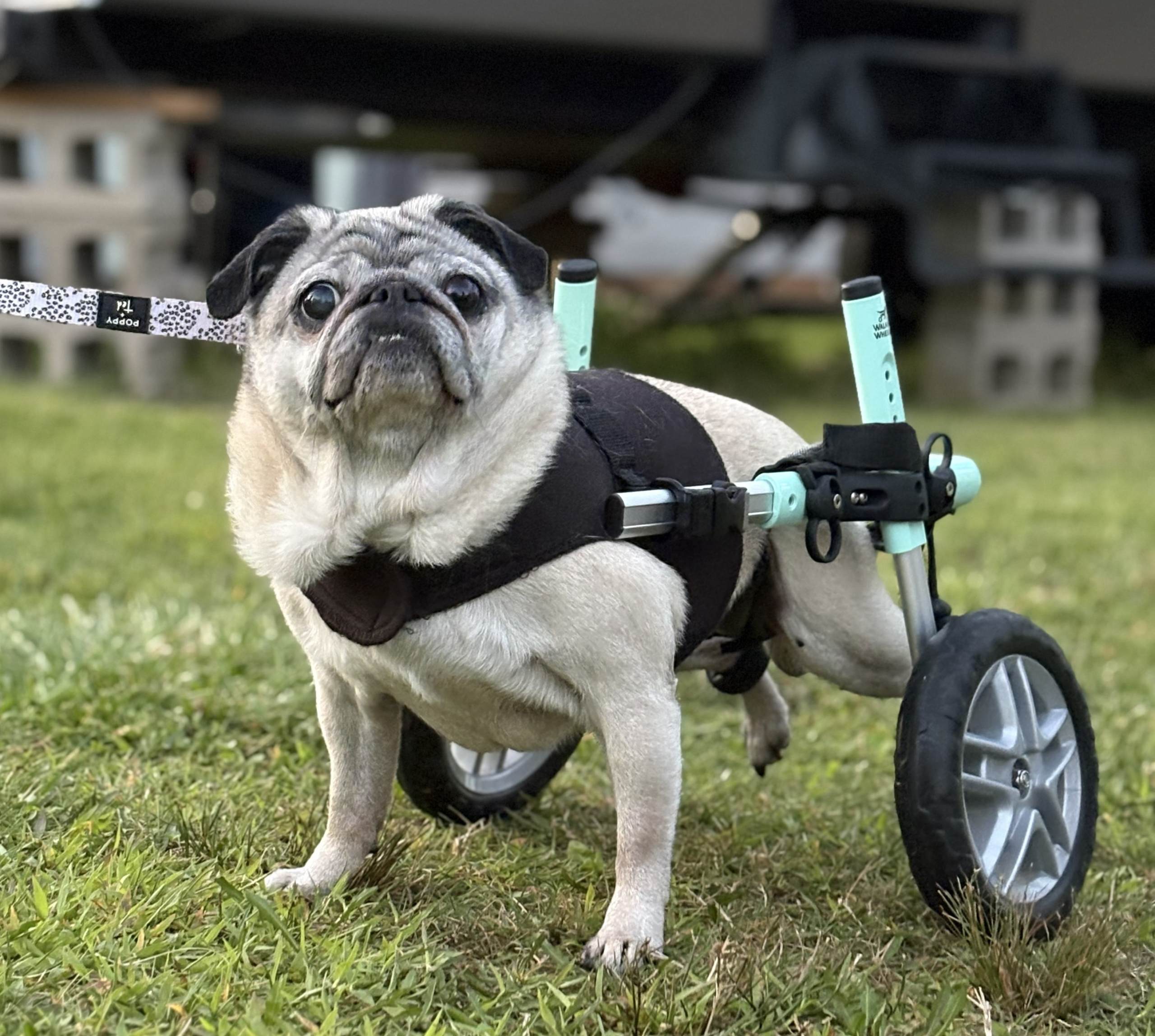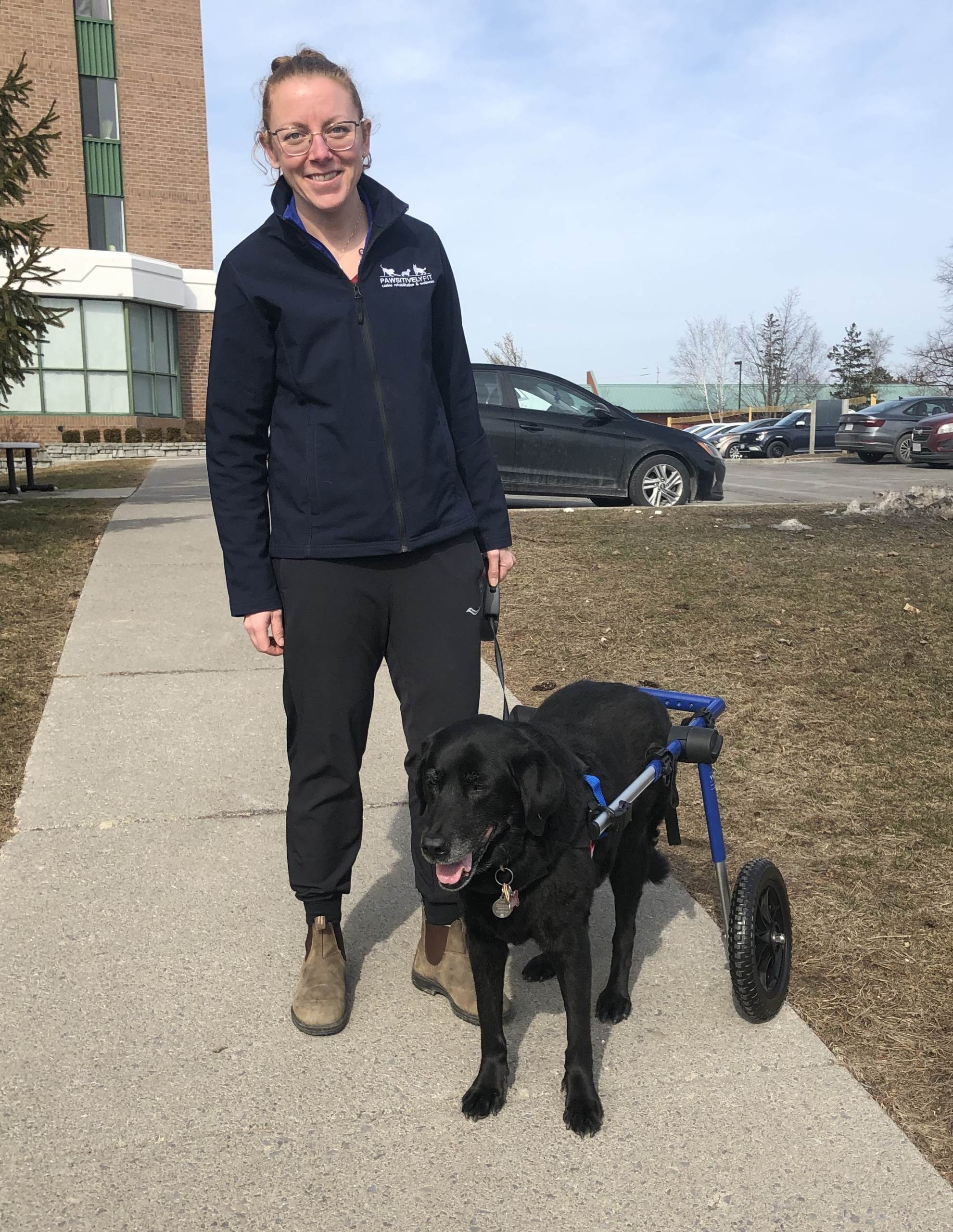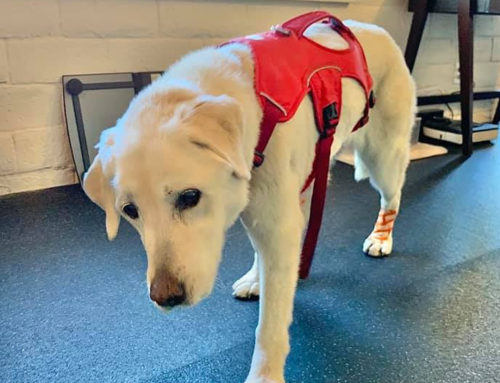It can be heartbreaking to see your dog struggle to walk. Maybe they’re slowing down on walks, having trouble getting up, or even dragging their back legs. Owners often wonder: “Is it time for a wheelchair?” The truth is, dog wheelchairs aren’t just for end-of-life care — they can be an incredible tool to keep dogs active, safe, and happy.

A wish would be for dog wheelchairs to be called mobility carts or walkers. If we changed what we called them I do believe more owners would see and understand the value of them for our dogs. If we could see them more like we do walkers for humans, as active rather than passive devices, they would be more accepted.
Here’s what you need to know about when to consider one, what they can (and can’t) do, and how to get started.
What is a dog wheelchair?
A dog wheelchair, sometimes called a cart, is a device with wheels that supports the dog’s hind end (or sometimes all four limbs) so they can move around more easily. They come in adjustable, custom, and breed-specific designs.
They don’t replace your dog’s legs — they support them, reducing strain and allowing your dog to continue exploring, exercising, and playing. What is limiting your dog’s mobility right now? If it’s weakness, pain or paralysis, a cart or wheelchair could help them regain freedom.
What are some reasons a dog might use a wheelchair?
You might want to consider a cart if your dog is showing any of these challenges:
- Weakness in the hind legs — struggling to push up, dragging toes, or frequent stumbling.
- Paralysis from conditions like intervertebral disc disease (IVDD).
- Chronic joint disease such as hip dysplasia or arthritis that makes walking exhausting.
- Neurological conditions like degenerative myelopathy, where progressive nerve loss affects mobility.
- Injury recovery where safe support is needed during rehab.
The goal is to improve mobility. A common concerns is that a wheelchair could make a dog weaker when, in reality, it will often keep our dogs fitter and more active.
Many owners wait too long to introduce a cart, but introducing a wheelchair earlier often helps dogs stay active and prevents injuries, such as wounds from dragging feet or muscle strains from overworked limbs.

Holly, who had Wobbler’s disease, practicing in her cart.
What a wheelchair can and cannot do
A wheelchair can promote independence on walks and playtime. It allows for safe, controlled exercise that maintains strength and fitness. As previously mentioned, it can prevent secondary problems like pressure sores from dragging, or muscle loss from inactivity. Most importantly a cart can improve your dog’s mood and quality of life — moving around makes them feel like themselves again!
A wheelchair won’t cure the underlying condition (arthritis, IVDD, degenerative myelopathy, etc.) and is not a replacement for veterinary care, rehab, or medications. For many dogs it may take time and training to adjust to a new mobility cart. While many owners believe their dog won’t accept or tolerate a wheelchair, most dogs do quite well with training and positive reinforcement!
Wheelchairs are primarily for outdoor use, especially when it comes to medium to giant breed dogs. Smaller dogs may have enough space to maneuver in their cart indoors. For indoor mobility, a drag bag or a Help’em Up Harness may be more appropriate. Unsure what your dog needs? Pawsitively Fit can help you decide.
How do I decide which wheelchair to get for my dog?
This is when it’s a great idea to work with a professional who has experience with dog wheelchairs and carts. Dog wheelchairs can be fully-custom or semi-custom. They can have 2-wheels or 4-wheels. Hind feet up in stirrups or all feet on the ground. While using a canine cart is a relatively simple process, there are lots of ways to get it wrong.
If you think your dog might be a good candidate for a wheelchair, work with a reputable professional and/or wheelchair company. At Pawsitively Fit, we use Walkin’ Pets Wheelchairs and can assist with measuring, ordering, assembly and adjustments for your dog. Other reputable companies for wheelchairs are:
Common questions about dog wheelchairs
There are many questions that usually come up when it comes to dog wheelchairs. Here are just a few. Many more are answered here.
- Will my dog accept a wheelchair? While we cannot say for certain, most dogs can and do accept a wheelchair with practice and lots of positive reinforcement.
- Can my dog stay in a wheelchair all day? No. Your dog should always be supervised while they are in their cart. Start with short 5-10 minute session and build up to 15-30 minutes if your dog is tolerating it.
- Can my dog sit while in a wheelchair? No. Their pelvis is supported by the cart preventing the back legs from bending into a sit
- Can my dog go to the bathroom while they are in a wheelchair? Yes! This may take some practice for your dog, but they can learn to toilet while in their cart.




